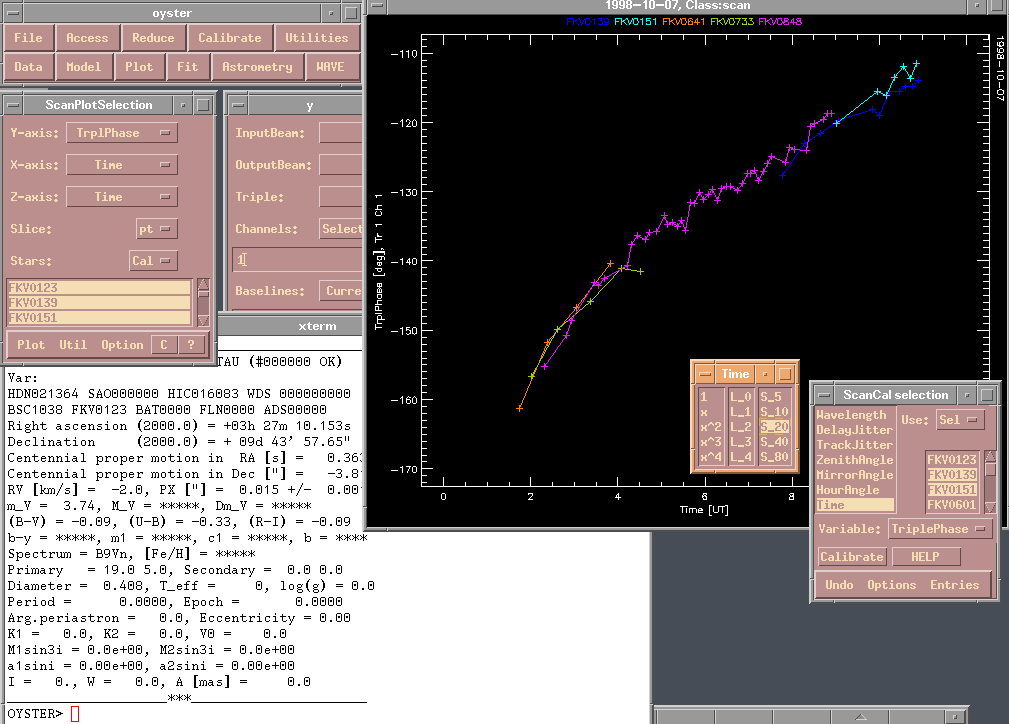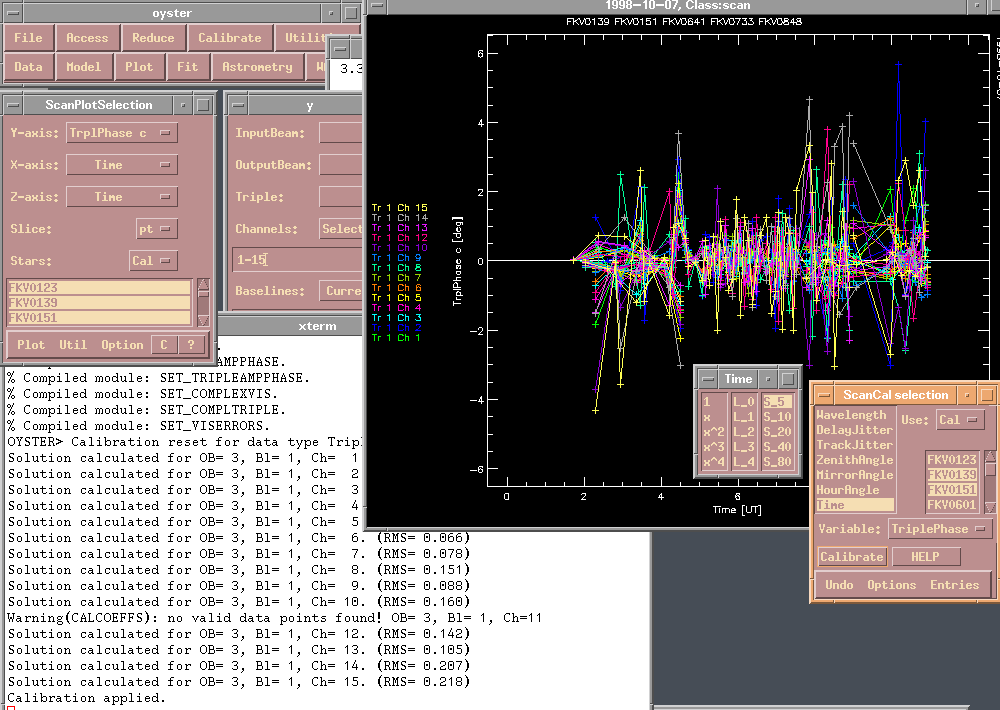Calibrating visibility phases
To do the closure phases (or triple phases), essentially use the same
procedure, except in this case only the correlation with time makes sense.
(To deselect an indicator, simply click on it in the list widget, and it
will remove its base function widget.)
I have plotted the uncalibrated phase versus time for all calibrators, using
the Cal directive in the plot widget. This causes OYSTER to check a flag
(bflag) for every star in the startable to see whether the star is
listed as a calibrator (based on the file /home/cah/catalogs/npoi/diameter.bsc).
All calibrators show a very nice and tight correlation/drift with time for
the channel displayed.

Look at another 'goodie' in the above figure: a listing with information
on a star. This is procedure list_star, which has an argument specifying
the star, e.g. FKV0123 (so type: list_star,'FKV0123').
It lists part of the stellar information contained
in the startable on this particular star, which was collected from
various catalogs when you loaded the startable at the beginning of this
OYSTER session.
Before you go off and calibrate all channels make sure there are no phase wraps.
Plot the calibrated phase for all channels versus channel number, as shown in
the following figure. You notice that the phases are close to -180 degrees,
and two data points which actually wrapped. Using
Calibrate|Scans|Triple|ManualUnwrap, define a box over the data points to
be unwrapped, and enter the positive or negative multiple of 360 degrees
to be applied. For the example here, check the message screen at the lower
left. Currently, you have to do this step BEFORE calibration of the phases,
and using TriplePhaseC, since OYSTER won't allow you to change the raw phases.
I might change this someday, depending on what you, the users, tell me they
would prefer. The unwrapped data points will appear at their new location
in a red color.

This is the result when using all four available terms for the Legendre
polynomials, and using all calibrators together. I have plotted only channels
1 through 15, since for some reason, the higher channels show considerable
noise. As an aside, this was the night after we had the tour of the NPOI
site as part of the Lowell workshop on interferometry in October 1998.
Not bad, the system stability!

This result is obtained if S_5 is used for the calibration coefficients.

Next stop
Back to tour page
Back to main help page



